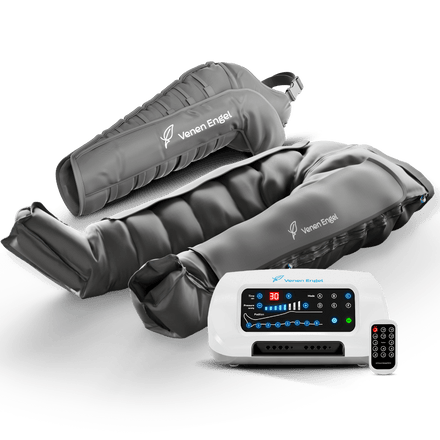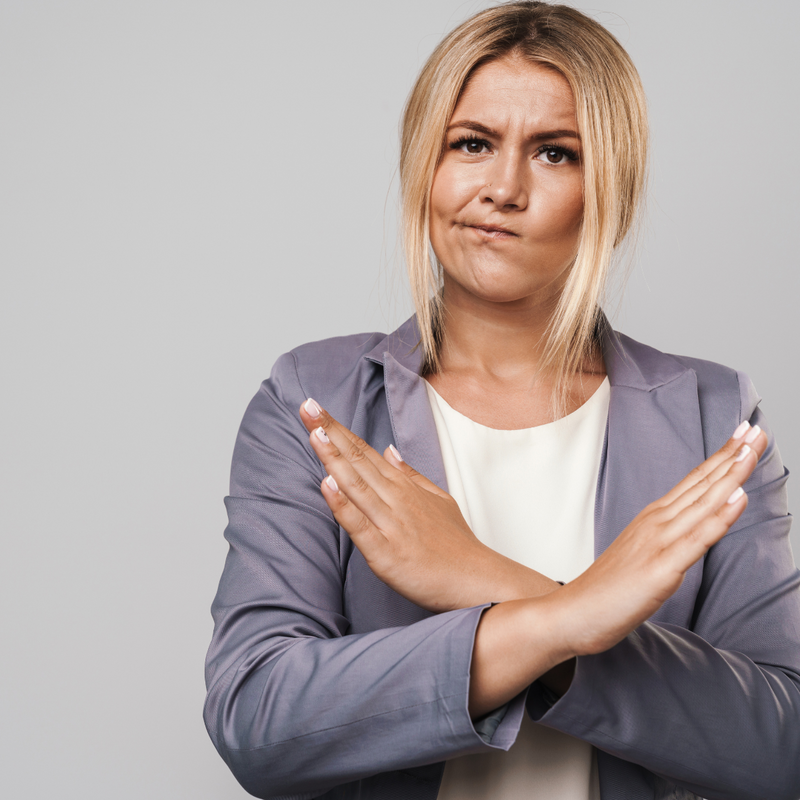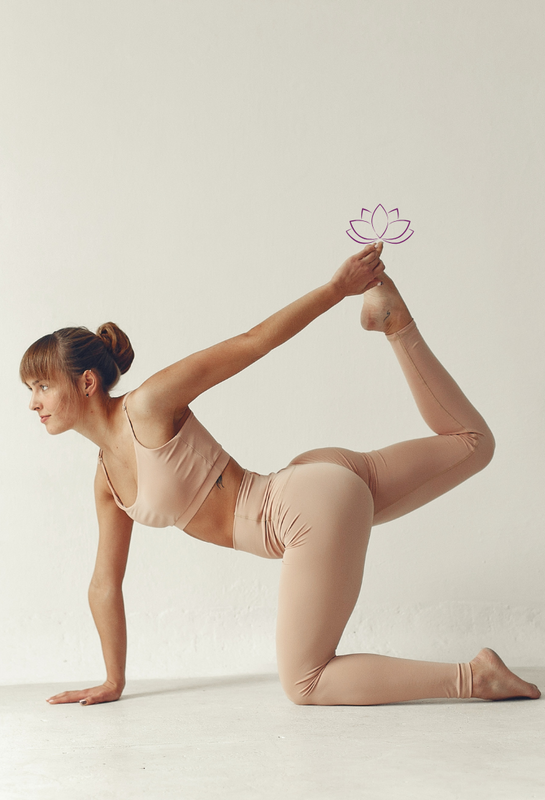
Lipedema is a chronic condition that primarily affects women and leads to an irregular distribution of fat in the body. It is a symptomatology where fat tissue in the lower extremities, but also in the arms, can swell abnormally. Unfortunately, there are still many misunderstandings and mistakes that those affected can make when trying to cope with this condition. These "sins" can worsen the symptoms or hinder the healing process.
In this article, we look at the five biggest mistakes you should avoid with lipedema. But don't worry, it's not just about what you shouldn't do. We also offer solutions on how you can improve your well-being and alleviate the symptoms.
Exacerbate the weight gain
1. The wrong diet
Many people with lipedema have difficulty controlling their weight. But there is a crucial difference between weight gain due to lipedema and weight gain due to unhealthy eating. Poor diet, especially high intake of sugar, processed foods, and trans fats, can not only lead to weight gain but also exacerbate the symptoms of lipedema.
Lipedema patients are often more susceptible to water retention and inflammation, which can be further exacerbated by an unhealthy diet. A balanced, anti-inflammatory diet is therefore essential. This includes fresh, unprocessed foods such as fruits, vegetables, healthy fats (e.g., from nuts or avocados), and plant-based proteins. These foods not only support your overall well-being but also help alleviate the symptoms of lipedema.

Tip: Avoid sugar and highly processed foods and opt for a balanced diet with little salt and healthy fats. This helps reduce inflammation in the body and balance fluid levels.
Less activity, more complaints
2. Lack of exercise

It doesn't work without compression
3. Lack of compression
Compression therapy is an essential element of lipedema treatment. Compression stockings or sleeves help improve blood circulation and prevent excess fluid from accumulating in the tissue. Those who forgo this therapy or do not apply it regularly risk a worsening of symptoms.
A common mistake is to wear compression stockings only occasionally or to choose the wrong size. The correct compression is crucial for them to be effective.
Tip: Make sure to wear the appropriate compression daily to reduce swelling and promote lymph fluid in the tissue. If you regularly change and take good care of your compression products, the success of this therapy increases significantly.
The Underestimated Problem
4. Stress and Psychological Strain
Stress is an often underestimated factor that can lead to a worsening of symptoms in lipedema patients. The body responds to stress by releasing cortisol, a hormone that can increase inflammation in the body. Stress not only leads to an increased perception of pain but also affects the hormonal balance and can thus negatively influence lipedema.
Tip: Find relaxation methods that suit you. Meditation, breathing exercises, or regular breaks can help reduce stress levels and alleviate symptoms. A regular walk in the fresh air often works wonders as well.

Self-help instead of professional advice
5. Lack of treatment options
There are numerous treatment options that can significantly ease living with lipedema. These include, among others, manual lymphatic drainage, specific massages, or even medical devices like the Venen Engel EMS Venen Board, which was specifically developed for the treatment of swelling. However, many affected individuals only seek help when the symptoms are already severe, instead of taking preventive measures early on.
Tip: Engage with your doctor or therapist early and inform yourself about supportive treatment methods. An individually tailored therapy concept can help you effectively alleviate the symptoms.

Conclusion:
How to alleviate the symptoms of your lipedema

Setu Bandhasana
Shoulder Bridge
Lie on your back, place your feet close to your buttocks, and lift your hips. This position relieves the lower back and promotes circulation in the abdomen and chest.
Inversions
Use gravity to your advantage
Inversions are ideal for directing fluid from the legs back into the upper body.
Viparita Karani
Waterfall
Lie on your back and stretch your legs up against the wall. This position is particularly helpful for reducing swelling in the legs.

Your new lifestyle
Yoga as Part of a Holistic Lifestyle
In addition to yoga practice, other factors also play a role in supporting the lymphatic system. A conscious diet, adequate fluid intake, and regular exercise can enhance the positive effects of yoga.
Nutrition and Yoga – A Perfect Combination An anti-inflammatory diet can help reduce water retention. Foods like ginger, turmeric, citrus fruits, and leafy greens promote circulation and help the body eliminate toxins.
Practical tips for integrating yoga into daily life: It doesn't always have to be a long yoga session. Even five minutes of deep abdominal breathing or a short inversion pose like the waterfall can help reduce swelling and relax the body.
Meditation and Mindfulness: Meditation and mindfulness exercises are also valuable additions to yoga practice. Stress and inner tension can worsen water retention and lymphatic congestion, so regular mindfulness practice helps promote mental calm and serenity. A calming meditation can relax the nervous system and indirectly contribute to improving lymph flow. Tips for Practice: Flowing Breath: Pay attention to deep and even breathing during the exercises. Mindfulness: To specifically activate lymph flow in your yoga poses, it is important to perform the movements slowly and consciously. Be mindful during the exercises and listen to your body. If you feel pain, adjust the pose or switch to another one. Regularity: Perform these exercises regularly to achieve the best results for lymph flow.
Conclusion
Why is yoga beneficial for water retention?
Yoga is a gentle yet effective support for the body and mind to stimulate the lymph flow and relieve the body. Through regular yoga practice, you can not only alleviate physical complaints such as swelling and lymphatic congestion, but also strengthen your body awareness and find mental relaxation. It is important to practice mindfully and respect your own limits. Every body is different, and it requires patience and care to enhance your well-being in the long term.
Yoga helps with water retention by:
- Improves lymph circulation: Targeted exercises promote the removal of excess fluid from the tissue.
- Stimulates blood circulation: Gentle movements support blood flow and thus help reduce swelling.
- Increases flexibility and strength: Yoga strengthens the muscles and improves flexibility, which can reduce discomfort from water retention.
- Reduces stress: The calming effect of yoga reduces stress, which can worsen water retention.
Find the yoga style that suits you best:
Certain yoga styles are particularly suitable for gently stimulating your lymph circulation, reducing swelling, and connecting with your body.
Yin Yoga: Yin Yoga is a calm and meditative yoga style where the asanas are held passively for an extended period (about 2 to 5 minutes). The gentle pressure of one's own body weight is deliberately used to target the deeper connective tissue, fascia, and joints. By statically remaining in the positions, the elasticity of the tissue is improved, adhesions are released, and the fluid flow in the lymphatic vessels is stimulated. This can be particularly beneficial for lymphedema, as it reduces tension in the tissue and gently supports circulation.
Yin Yoga also offers you a space for relaxation and mindfulness, allowing not only the body but also the mind to regenerate – a holistic approach that strengthens self-care and promotes well-being.
Hatha Yoga: Hatha Yoga is a calm yet strengthening practice that supports the lymphatic system through gentle, mindful movements and breathing techniques. Through slow, controlled movements and a focus on breath and body awareness, Hatha Yoga gently supports circulation and can thus reduce congestion that often occurs with water retention in the body.
The asanas are performed at a slow pace and held for a few breaths, creating a strong connection between body and mind in Hatha and promoting physical and mental balance.
Vinyasa Yoga (adapted): Vinyasa Yoga is usually a more dynamic style, but an adapted, gentle version can also be helpful in promoting lymph circulation through flowing movements and light sweating. A gentle Vinyasa class can help you stay active and stimulate circulation without putting too much strain on the tissues.
It is important to avoid overly demanding sequences that could cause you to overheat or hinder lymphatic flow. Simple variations of asanas with breaks and time for recovery are often more effective here than overly demanding or advanced positions.
Try it out and feel the difference
Discover how positively yoga practice can affect your well-being and lymph flow. Just a few minutes a day, consciously connected with your breath and body, can make a difference: reduce swelling, relieve tension, and provide a feeling of lightness and relief. Take the time to practice mindfully and give your body the support it deserves – for a healthy, relaxed, and vital everyday life!
About the Author: Barbara is our Brand Manager at Venen Engel and also a certified yoga instructor. In her Hatha-inspired classes, she guides participants on their journey to physical and mental balance as well as holistic well-being. With great mindfulness, she encourages her students to strengthen their own body awareness and to perceive themselves better.













